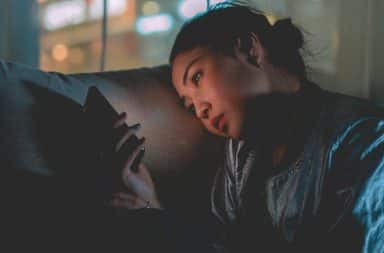You are here to learn the art of dramatic eating. A skill that most casual actors ignore, but dedicated performers cherish. Especially those with only two or three lines per show.
No matter! How your character eats tells us so much about who they are.
Everyone, imagine how your character chews her food.
Is she chewing fast? Perhaps she is an anxious, nervous person. “Has anyone said anything bad about me? Did anyone notice how long I took in the bathroom? What are all the main characters talking about?” All conveyed without a single line.
Or does she eat with her mouth clenched tight? She could be a person desperately angry with her current situation. “Why can’t I leave this terrible marriage and have an affair with the man I love—the pool boy? If only I could get up and walk around the stage, I would run away with him this instant! That would definitely make my husband, a supporting character in this play about upper-class existential problems, jealous!”
Everyone, take a look at Paula. Notice the thousand-yard stare in her eyes as she chews? See how she’s chewing on just the one side of her mouth? Oh! And look at how she’s swallowing her food—tilting her head as if she’s thinking of something to say, even though she doesn’t have any lines in this scene.
Excellent work, Paula. This will help you immensely with your audition for Law and Order: SVU as Customer at the Restaurant.
Let’s move on from chewing to plate work.
Jenny, let’s focus on you for this one. Is your character going to simply lift a plate up from the table, ho-hum? No!
Pick up the plate as if it weighed 30 pounds. Wrench your shoulder as you heft it off the table. Do you see how the table represents the paternalistic way your husband decides on where to go for every family outing? You are the plate! Rescue yourself from this situation. Lift the plate and say, “Enough with Anaheim, we’re going to Florida and that’s FINAL!”
Marvelous! Jenny is up for the role of Mrs. Lillian Disney in a Walt Disney-biopic web series called Kissimmee or Bust.
Now Chad is working with the plate in a fascinating way. See how he slides the plate from his side of the table to the other without getting up? Then he leans back into his chair and stares at the ceiling, as if to say, “No one understands me.” What would be great here is if you put out a cigarette on the plate before sliding it over to the other side, that’s really communicating something.
Chad is playing The Boy in a community television production of The Boy Who Cried Wolf. His one line is “Wolf!” Excellent work, Chad.
Another aspect of dramatic eating is utensil emoting. There are so many ways to convey emotions with a fork or a knife. You can jab at the food, angry at your partner for leaving you behind while they moved on to a life of fame and fortune, as conveyed through a five-second flashback scene whilst the main character talks about their “humble beginnings.”
Or drop your utensils loudly as the waitress spills your drink on your lap because you, the jerk customer, made a crude comment about the food being cold. The audience will know from that loud utensil ruckus that you were not expecting that! She’ll probably go on to become a wildly successful rock star or an improbable spokesperson for the underdog!
And never forget the boldest of moves—gesturing with your food! This is what I focus on with my character The Best Friend, in the Lifetime TV movie, Burger Murder.
In one scene my character and her friend Jenny are discussing the recent spate of murders in town, and Jenny is unconvinced that things are really so bad. I lift my hamburger up to my face as she says, “I don’t know, I think people are making a big deal out of nothing.” Then I drop the burger flatly down on the plate.
I’m telling the audience, “I can’t believe this! Wasn’t her husband killed just last week by the murderer? The murderer who is killing everyone Jenny knows, one-by-one? The murderer they suspect to be working at a hamburger restaurant in this very town?”
All with my burger! Because they didn’t want to give me any lines!
I follow this up with a few sips of soda from my straw while rolling my eyes at her, and make a sarcastic laugh before I take a bite of the burger. Now the audience knows that the Best Friend is definitely dying, and Jenny will never figure it out until it’s almost too late.
We’re advancing very quickly, you’re all doing very well exposing your characters through method eating.
In the next class we’ll work on drinking from a coffee cup while the main character delivers an expository monologue. It’s much harder than it looks.


